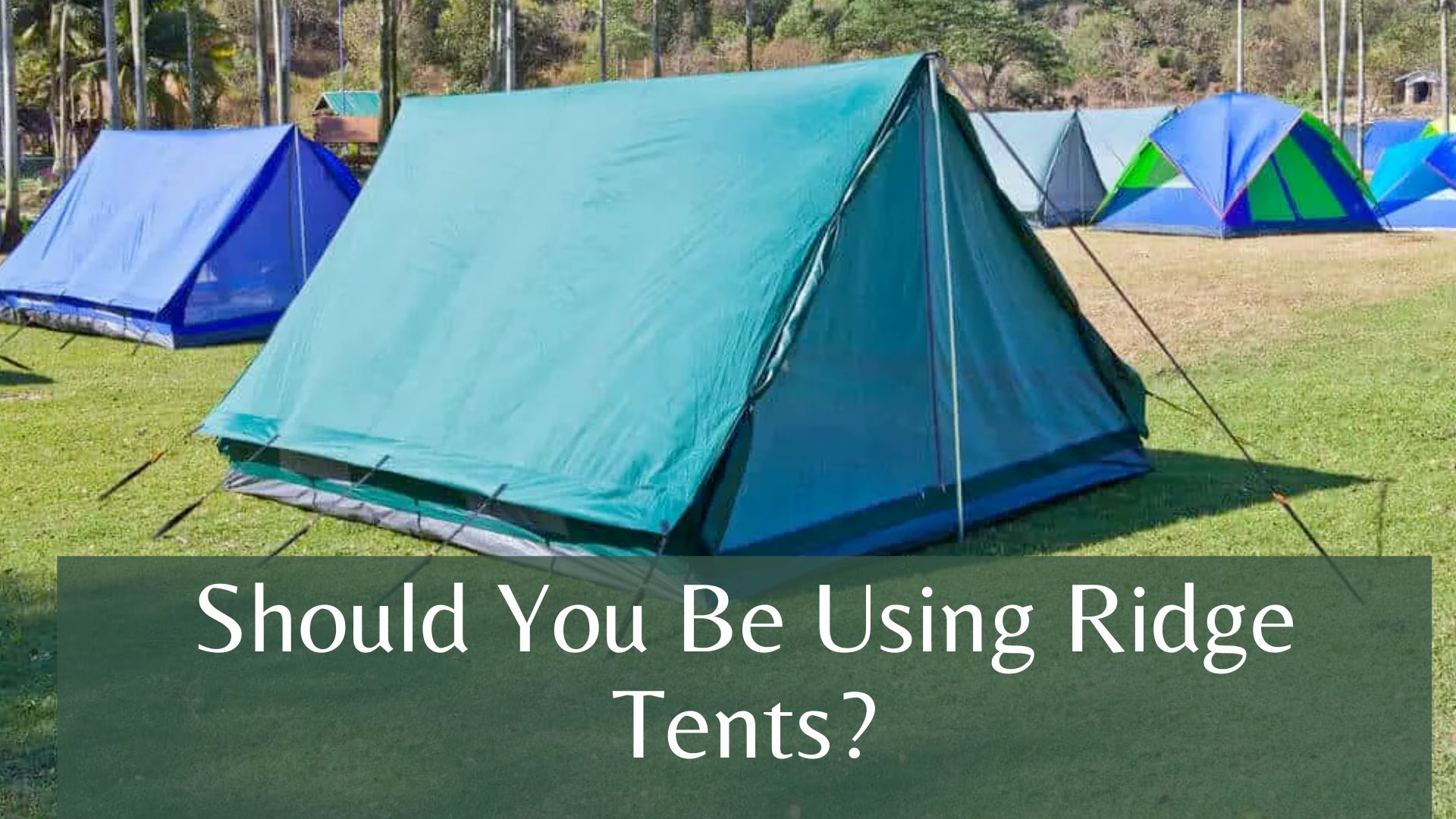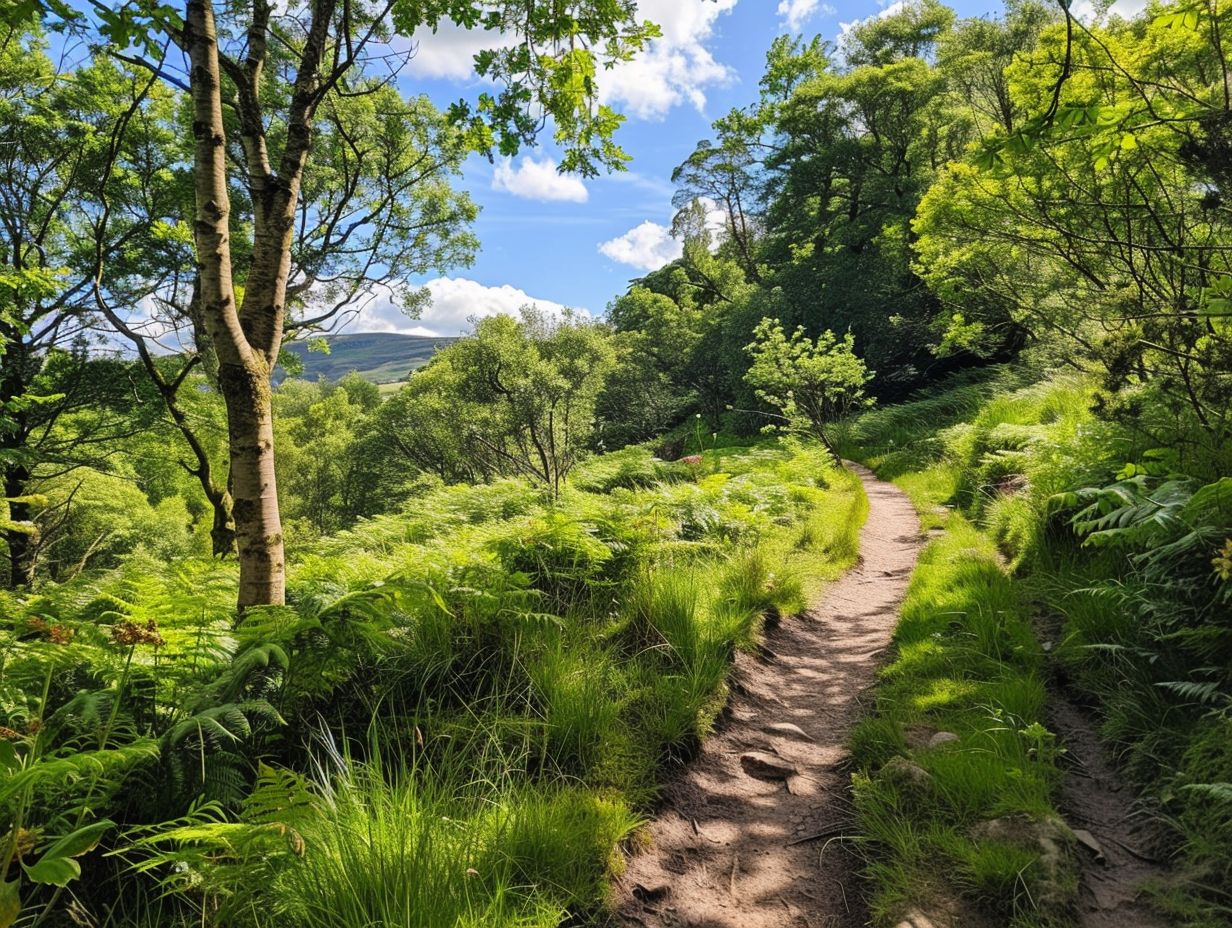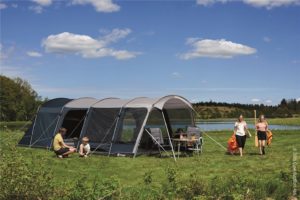

Andy
- Categories: Camping
Camping is one of the most popular recreational activities, especially amongst outdoor and nature enthusiasts. Experiencing the outdoors can be dangerous, especially when you don’t have a means of shelter and storage. Tents are essential when it comes to spending a couple of nights in the wild. They provide you with a place of shelter to sleep as well as storage for essentials such as food and water which can easily get consumed by wild animals if left in the open.
There are a wide variety of tents available, from pop-up tents to geodesic tents that are able to withstand even the toughest of conditions. Each tent comes with its own set of advantages and disadvantages, making them suitable for different types of trips and environments.
Many of you may know of the tent that has a triangular ‘A’ shape and is widely portrayed in olden day cartoons and shows. When one thinks of a tent, this is the tent that often comes to mind. It is known as a Ridge tent. A Ridge tent is one of the oldest types of tents and typically comprises three poles, two upright supporting poles and one that runs across known as the ridge pole. A sheet is then drawn over the poles and stretched out, giving it its distinct ‘A’ shape.
That being said, more modern variations of Ridge tents do exist and may require more than three poles to be set up. Larger and more complicated designs are also available today and may have certain advantages over the basic Ridge tent.
The Pros And Cons Of Ridge Tents
As with any other tent, looking at its pros and cons is the simplest way to decide if a tent is suitable for your camping trip. Ridge tents are no different and they have their own sets of advantages and disadvantages worth taking note of.
Pros
Despite being relatively simple in design, Ridge tents are one of the sturdiest types of tents. Ridge tents are lashed down by the sides and corners, applying tension on each side of the tent in the opposite direction. This creates a structure that is very sturdy despite only being supported by three poles. The more ropes are used to lash down the tent, the sturdier it becomes. An expert at tent pitching will be able to set up one that will be able to withstand strong winds and heavy rain.
The shape of the tent itself gives it an advantage in the rain as water will simply glide down the sides of the tent and prevent any buildup or pooling of rainwater.
Ridge tents are fairly easy to set up as well and you do not have to be an expert to get them right. All you need are simply some poles, a sheet, ropes, and some pegs.
If you’re a solo traveller who rarely spends time inside your tent, Ridge tents are an option that you should definitely look at. Ridge tents are ideal for solo camping due to their small footprint. This leaves you with much more space for other things to be set up around the tent as compared to other bulkier tents. Finding a camping spot large isn’t a hassle when it comes to Ridge tents as well.
Furthermore, ridge tents can be very light and compact when packed up, useful especially if you plan on walking between your campsites.
Cons
All tents come with a couple of disadvantages, and Ridge tents are no exception. However, depending on your personal preferences and type of trip, these disadvantages may be looked over.
A drawback of its sturdy shape would be the limited storage space and sleeping room you have. Ridge tents are naturally small and the space might get a little too tight for many items and multiple people. However, as mentioned above, for solo travellers, space wouldn’t be an issue.
The triangular shape of the Ridge tent gives you much less headroom as compared to other tents, which may be a nuisance to some.
Ridge tents are also susceptible to poor set-ups. If set up too tall, Ridge tents will not do well in windy areas due to a less aerodynamic and larger surface area that is exposed to the wind. If the ropes are not pulled taut and tied loose, the structure of the tent will be greatly compromised as well. That being said, these are all fairly simple things to look out for and easily adjusted if need be.
How To Pitch A Ridge Tent
1. Lay Out The Tent
The first step involves laying out the tent over the area where you intend to pitch it. For your own comfort, ensure that the area is as flat as possible and remove any sharp rocks that may cause discomfort when you’re in the tent.
2. Put The Ridgepole In Place
The ridgepole is the pole that will run across the length of the tent. Place this pole underneath the sheet in the centre. Some modern Ridge tents will have a designated slot for such a pole, making it easier to work with.
3. Position The Upright Poles
The remaining two poles that you have with you are called the upright poles. These are to be secured onto the ridge pole at a ninety-degree angle. If your poles come with a slot or connector joint, securing them is as easy as aligning the joints together. If not, you can secure the poles together using some ropes.
4. Peg The Tent Down Loosely
The tent then has to be pegged down at the corners loosely and for more secure setups, along the poles and the sides as well.
5. Raise The Tent
Raising the tent will add tension to the sheet, forming the ‘A’ shape and making the whole structure sturdy. This may be easier done with two people and when done right, you should see the tent start to take shape.
6. Tighten The Pegs
Last but not least, the pegs have to be tightened and if need be, readjusted to add more tension to the sheet. This will ensure that the entire sheet is taut and secure enough to withstand harsh winds and heavy rain.
Ridge tents are fairly simple to set up and only require some knowledge. You will however be rewarded with a sturdy tent that is just as easy to pack up when you plan to head out. I would definitely recommend ridge tents to travellers who are going solo and plan on moving from campsite to campsite often. If you are, however, planning to share a tent as a group, tunnel tents and dome tents would be much better options so do check those out too.
Share:
By submitting your email address, you are agreeing to receive marketing emails from theexpertcamper.co.uk.
We’ll never share your email address and you can unsubscribe at any time. Privacy policy
Related Posts

A Seasonal Guide To Hiking In The Peak District
Are you ready to lace up your hiking boots and explore the stunning landscapes of the Peak District? This seasonal guide will take you through

Hiking Challenges Preparing For Your First Ultrahike
Are you ready to take your hiking adventures to the next level? Ultra-hiking offers a unique combination of physical and mental challenges, breathtaking scenery, and

Ecofriendly Hiking Tips For Sustainable Adventures
Are you an outdoor enthusiast looking to minimise your impact on the environment while enjoying the great outdoors? Eco-friendly hiking is the perfect solution! We

The Best Hiking Trails For Experiencing UK Wildlife
When exploring the picturesque hiking trails of the UK, you can expect to encounter a diverse array of wildlife. From majestic birds soaring overhead to

Wildflower Walks The Best Trails For Nature Lovers
Are you a nature lover looking to embark on a wildflower walk? Explore the best trails for wildflower walks, including [Trail Name 1], [Trail Name
























